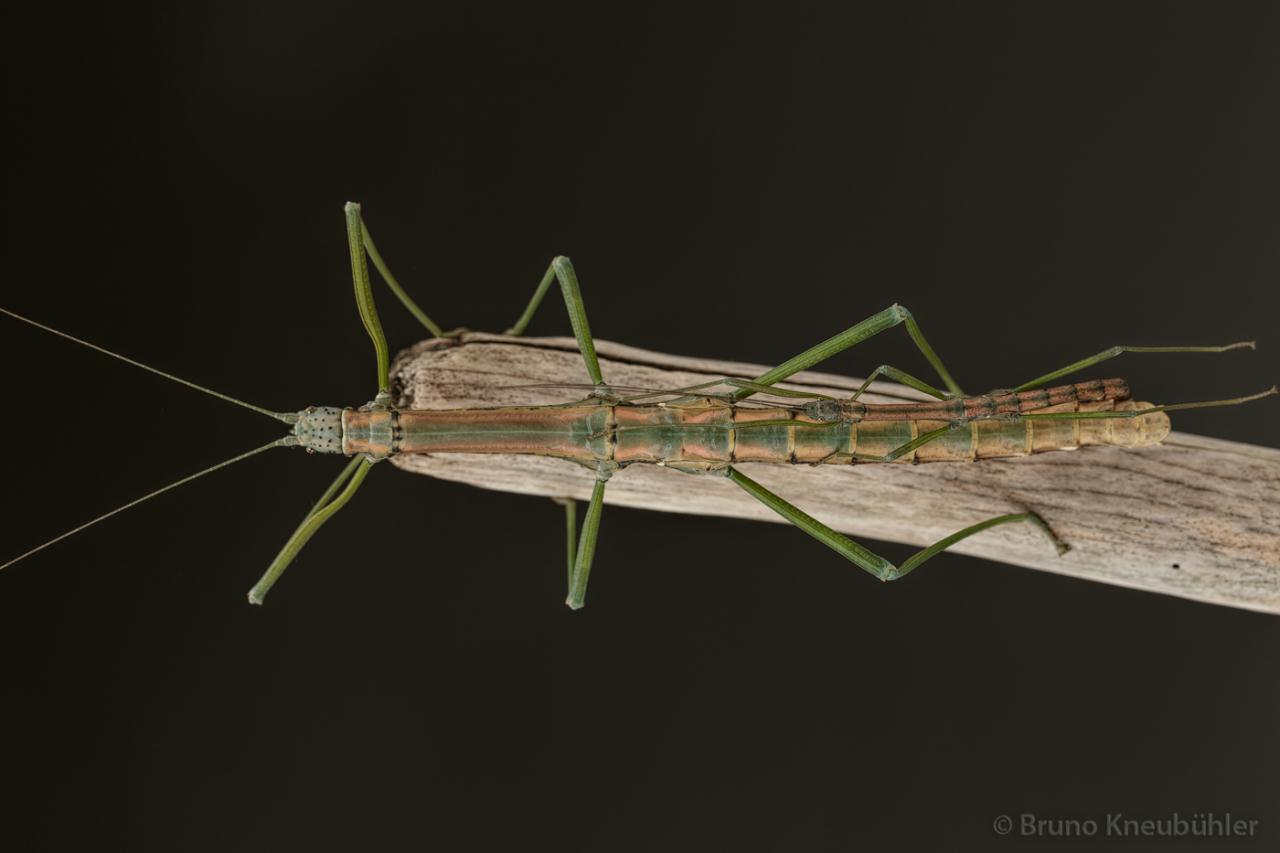
Genus
Stock
CLP
751
PSG
395
Culture status
In culture
Foodplants
Bramble (Rubus spp.)
Hypericum spp.
Salal (Gaultheria shallon)
Hazel (Corylus avellana)
Breeding notes
(by Bruno Kneubuehler)
General Informations
- provenience: Nui Chua NP (Vietnam)
- taxonomic evaluation by Joachim Bresseel and Jérome Constant
- F1 CB culture by Kristien Rabaey in 2015
- further taxonomical informations ➤ phasmida.speciesfile.org
- this is a pure culture, and serious breeders are asked to avoid mixing this culture with similar populations from a different provenience. When spreading this culture to other breeders, then always use the full name with provenience
- described as Nuichua rabaeyae. Bresseel, Joachim & Constant, Jérôme. (2018). Two new stick insect genera from Vietnam, Nuichua gen. nov. and Pterohirasea gen. nov. with two new species (Phasmida: Diapheromeridae: Necrosciinae). Belgian Journal of Entomology. 70. 1-29.
Females
- rather sturdy, medium-sized and colorful species
- body length 11 - 13 cm
- green and reddish-brown
- head is blueish-green with small black warts
- forewings are reduced to a small, whitish scale
Males
- slender and quite colorful
- body length about 6 cm
- red-brown with green legs
- forewings are reduced to a small, whitish scale
Nymphs
- freshly hatched nymphs are dark brown with many small light dots
- on how to distinguish between male and female nymphs
Eggs
- 3 x 2 mm
- grey-brown with a dark marbling
- suface looks scraggly
Food Plants
- bramble (Rubus spp.)
well accepted by nymphs and adults - St. John's wort (Hypericum)
well accepted by nymphs and adults - Salal (Gaultheria shallon)
well accepted by adults (not tested with nymphs) - hazelnut (Corylus)
well accepted by adults (not tested with nymphs)
Breeding, Behaviour
- very easy to breed
- active mainly during the night
- especially nymphs can react very hectic when touched
- older nymphs and adults often feign death when touched, or they try to crawl away for a short distance
- eggs just drop to the ground
- about 10 eggs per female and week
- incubation time (Cup-Incubation-method on medium damp vermiculite) is about 2 - 4 months at 20 - 23 °C
- incubation time is not yet determined, but could be rather short
- eggs can be covered by vermiculite (about 3 mm high), which makes it easier for the nymphs to hatch without getting stuck in the eggs shell
- eggs of this species are not prone to get mouldy
- a humidity of about 65 - 70 % seems to be good enough for this species
- males will be adult after 2.5 months (at 20 - 24°C), females after 4 months
- adult males will "occupy" pre-subadult female, and then stay connected with that female for the rest of their life
- but these females moult easily, even with the males on their back:
https://www.youtube.com/watch?v=h5CbB1DUQck - and when two males, who have already their own female, come too close to one another, then they will get quite agitated and try to fend off the other male with their legs - quite an action
- one can spray them regularly with chlorine-free water, but allow the water to dry up before spraying again


































